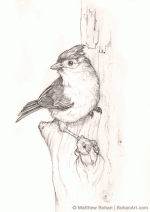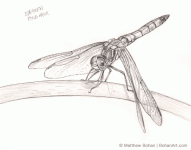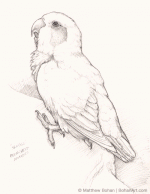solitaryVSong
Well-known member
I think part of the problem with the Dragonfly/Damselflies is that to really identify many of them you have to catch them and have a loupe to check for varies tiny features. On top of that is the sheer volume of the individual species. I think that is why the books tend to split off the dragons from the damsels.
That being said, the small Stokes guide is actually quite good and not overly pricey. The photos are on the small side, but at the same time they make it simple to ID them to species in some cases, and groups in others, which is really all you typically want... unless you are the guy with the a huge butterfly net, lightning fast reflexes and loupe at the ready. I think the folks most interested in that are bringing them home dead in a jar to ID, which would kind of kill the magic of the moment. It would make them considerably easier to draw though! The birds make life much easier for us as far as identification... and they seem to have a better public relations team.
Thanks for your thoughts on this Matty. I got started in the indecipherable world of shorebirds with the Stokes Guide. So I have nothing against them. I just had to buy another guide a year or two later. It will go on my Christmas list!
As an old hand at the 'killing jar' back from when I used to draw insects I caught under a dissecting microscope I'm familiar with the difficulties of ID. As I recall from those 15-20 years ago I think you needed to study the venation of many wasps in order to ID them. I did hate the thought though that I had to kill the insects in order to ID and draw them. Happy to be sticking with live subjects now, though they're far less cooperative.







